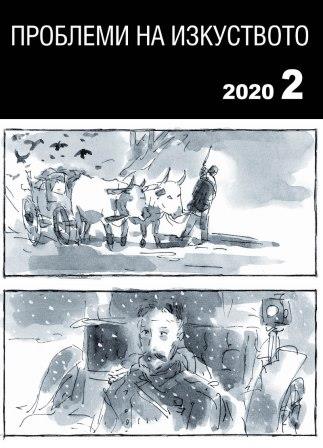„Орфизмът” на Кокто: „Орфей” (Orphée), 1950
Cocteau’s ’Orphism’: Orpheus (Orphée, 1950)
Subject(s): Fine Arts / Performing Arts, Film / Cinema / Cinematography, History of ArtPublished by: Институт за изследване на изкуствата, Българска академия на науките
Summary/Abstract: The article seeks to analyse Jean Cocteau’s Orpheus (Orphée, 1950), the second film of his Orphic Trilogy: The Blood of a Poet (Le Sang d’un Poète, 1930); Orpheus (Orphée, 1950) and The Testament of Orpheus (Le Testament d’Orphée, 1959), featuring a mystical character, clearly associated and synonymous with himself. The work addresses the sources of his ’Orphic’ inspiration and artistic challenges at several levels. At the first level, the genesis of his dramatic work, associated with the mythology of ancient tragedy and concentrated between the 1920s and 1930s, is traced. Reverting to ancient myths in the field of drama in Europe became particularly tangible in the 1920s, explained by critics as a kind of reaction to the existential problems caused by WWI and its aftermath. Cocteau’s approach to ancient tragedy sought to reduce its ancient dimensions, to modernise Antiquity by demythologising it and to decrease its high values to the mainstream. After Antiquity, Orphism resurfaced in at least three major stages in the development of the European civilization, on the traditions of which Cocteau drew his images, symbols and notions. The first significant to the peculiar interpolation of Orphic ideas into the Modern World period was the one during the Renaissance with Florence and the figure of Marsilio Ficino as its spiritual epicentre. The image of Orpheus and his works were of particular importance to those Renaissance thinkers who sought to bring Christianity into line with ancient classical traditions. Orpheus became once again a significant figure to German and French Romantic poets. The next significant period of the ‘resurrection’ of Orphism came with the French fin de siecle, when Symbolist poets and artists turned to the tradition of Orphism, set between the Platonism of the Renaissance and modernist interpretations, mainly in the ideas of Stéphane Mallarmé, Rainer Maria Rilke, etc., about Orphism as art for art’s sake dematerialising reality. The new ‘Orphic religion’ of Cocteau was neither a figment of his imagination nor a result of random and unsystematic eccentric experiments, nor of mechanical borrowing and superficial imitation. This concept broke with the literary tradition of the ancient mythological narrative of Orpheus and Eurydice through the prism of modernism to give rise to a remarkable avant-garde experiment. With all the multiplicity of sources of ‘orphic’ inspiration over time and authority, Jean Cocteau was doomed to create his own, personal mythology, focused rather on himself. Orpheus is the ideal matrix for exploring the poet in his relations with love and death, as is the mirror for the nature of artistic creativity, respectively poetry, reflecting reality in an ideal, intangible image.
Journal: Проблеми на изкуството
- Issue Year: 2020
- Issue No: 2
- Page Range: 3-12
- Page Count: 10
- Language: English, Bulgarian
- Content File-PDF

